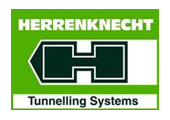Keiyo Line Daiba Tunnel
HEIGHT: 8.05 m to 8.60 m
WIDTH: 12.20 m to 17.53 m
TOTAL IMMERSED LENGTH: 672 m
DEPTH AT BOTTOM OF STRUCTURE: 23.9 m
ENVIRONMENTAL CONDITIONS: Site is situated in fairway of a busy port area.
FABRICATION METHOD: Steel shells were fabricated at shipyard. Bulkheads and rubber gaskets were installed and the elements were towed to pier at outfitting yard.
WIDTH: 12.20 m to 17.53 m
TOTAL IMMERSED LENGTH: 672 m
DEPTH AT BOTTOM OF STRUCTURE: 23.9 m
ENVIRONMENTAL CONDITIONS: Site is situated in fairway of a busy port area.
FABRICATION METHOD: Steel shells were fabricated at shipyard. Bulkheads and rubber gaskets were installed and the elements were towed to pier at outfitting yard.
Tokyo Port,
Japan

Japan Railway Constructin Public Corp.
Joint venture of Kajima Corp., Sato Kokyo Co. and Tekken Construction Co.
Japan Railway Constructin Public Corp.
96.6m
672m
23.9m
Project construction
1980-04-30
7
Two tubes; one track each
8.05 m to 8.60 m
12.20 m to 17.53 m
Tunnel was designed to be sufficiently flexible to accommodate up to 1.2 m of
settlement and survive a severe earthquake. Joints are tied together with cables, but
allow some flexibility. These flexible joints are provided between all of the elements and
at the terminal joints. Immersed elements tie into pneumatic caissons at both ends of
tunnel. To meet bored tubes, tunnel width gradually increases 5 m over elements Nos 5-
7.
settlement and survive a severe earthquake. Joints are tied together with cables, but
allow some flexibility. These flexible joints are provided between all of the elements and
at the terminal joints. Immersed elements tie into pneumatic caissons at both ends of
tunnel. To meet bored tubes, tunnel width gradually increases 5 m over elements Nos 5-
7.
Steel shells were fabricated
at shipyard. Bulkheads and
rubber gaskets were
installed and the elements
were towed to pier at
outfitting yard.
at shipyard. Bulkheads and
rubber gaskets were
installed and the elements
were towed to pier at
outfitting yard.
Reinforcement, and
concrete was placed at
outfitting jetty near tunnel
site. Survey towers were
installed after the element
was positioned into a jackup
platform.
concrete was placed at
outfitting jetty near tunnel
site. Survey towers were
installed after the element
was positioned into a jackup
platform.
Site is situated in fairway of a busy port area.
Placement from a jack-up platform because of space restrictions in Port area precluded
use of anchor lines. Crushed stone was used for placement ballast.
use of anchor lines. Crushed stone was used for placement ballast.
Joints between elements have a rubber gasket on the
outside and a small gap on the inside for flexibility. Cables
through the joints tie the elements together. H-shaped
steel members form a shear key embedded in the ends of
the elements at each joint to prevent excessive vertical
and horizontal displacement under settlement and
earthquake loadings. Caissons were used for the end
structures to protect existing port structures.
outside and a small gap on the inside for flexibility. Cables
through the joints tie the elements together. H-shaped
steel members form a shear key embedded in the ends of
the elements at each joint to prevent excessive vertical
and horizontal displacement under settlement and
earthquake loadings. Caissons were used for the end
structures to protect existing port structures.
Continuous steel shell. Each element was protected with 200 aluminum anodes, giving
an estimated life of 60 years.
an estimated life of 60 years.
A 70 cm thick, 12.4 m wide layer of 30 mm to 40 mm crushed stone foundation course,
screeded from jack-up platform.
screeded from jack-up platform.
1.1 m of crushed stone
1.1











